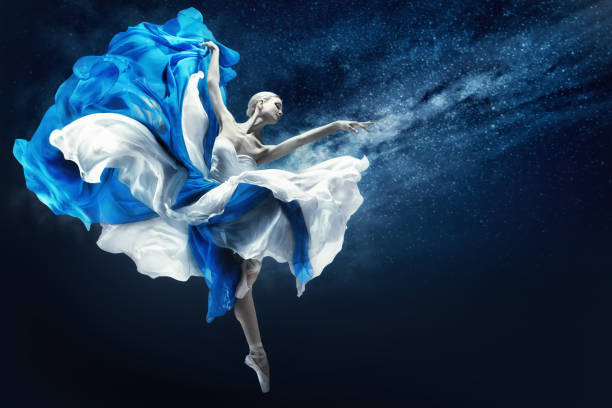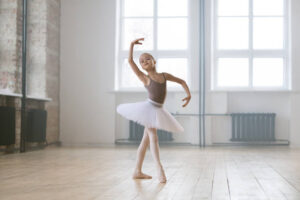Ballet is a classical dance form that originated in the Italian Renaissance courts of the 15th century and later developed into a highly technical and stylized art form in France and Russia. It has since become one of the most widely recognized and influential dance styles globally. Ballet is characterized by its unique vocabulary of movement, precise techniques, and expressive storytelling through dance.
Key features of ballet include:
- Technique and Form:Ballet places a strong emphasis on proper technique and form. Dancers follow specific positions of the feet, arms, and body, with each movement executed with precision and control. The emphasis on proper alignment contributes to the development of strength, flexibility, and balance.
- Pointe Work: Pointe work is a distinctive element of ballet where female dancers, often with years of training, dance on the tips of their toes using specially designed pointe shoes. This adds an ethereal and elevated quality to certain performances.
- Turnout: Turnout refers to the outward rotation of the hips and legs, a fundamental aspect of ballet technique. Dancers work to achieve a natural and controlled rotation of the legs while maintaining stability and alignment.
- Ballet Vocabulary: Ballet has its own rich vocabulary of movements and positions. The terminology is primarily in French and includes terms such as plié (bend), tendu (stretch), arabesque, pirouette, and grand jeté. This specialized language helps instructors communicate precise instructions to dancers.
- Storytelling and Expression: Ballet often incorporates narrative elements to tell stories, convey emotions, or depict characters. Classical ballets, such as “Swan Lake,” “The Nutcracker,” and “Giselle,” are known for their intricate choreography and storytelling through dance.
- Five Basic Positions: Ballet is built on five basic positions of the feet, which serve as the foundation for many movements. These positions are used as a reference for the placement of the feet in different combinations throughout a dance.
- Pas de Deux:
- Pas de deux, meaning “dance for two,” is a classical ballet duet typically performed by a male and a female dancer. It often includes partnering work, lifts, and intricate choreography that showcases the synergy between the two dancers.
- Ballet Schools and Training: Ballet training often begins at a young age, and aspiring dancers may attend specialized ballet schools or academies. Training includes rigorous practice of ballet techniques, conditioning exercises, and the study of repertoire.
- Professional Ballet Companies: Professional ballet companies around the world, such as the Royal Ballet, Bolshoi Ballet, and New York City Ballet, showcase the highest level of ballet artistry. These companies perform a diverse repertoire of classical and contemporary ballets.
- Contemporary Ballet: While classical ballet remains a cornerstone, contemporary ballet has evolved as a genre that incorporates elements of modern dance and experimentation. Choreographers explore new movements, themes, and styles while still preserving the fundamental techniques of ballet.
Ballet continues to captivate audiences with its beauty, athleticism, and artistic expression. It has left an enduring impact on the world of dance, influencing other dance styles and contributing to the broader cultural landscape.


